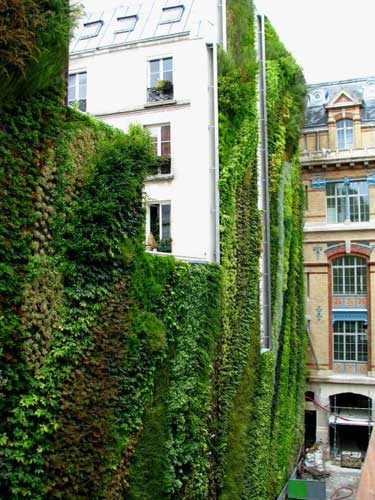Cleve West: Jeepers creepers
Urban Gardener: Architecture and nature have an interesting rapport – both can help flatter each other's weaknesses

Your support helps us to tell the story
From reproductive rights to climate change to Big Tech, The Independent is on the ground when the story is developing. Whether it's investigating the financials of Elon Musk's pro-Trump PAC or producing our latest documentary, 'The A Word', which shines a light on the American women fighting for reproductive rights, we know how important it is to parse out the facts from the messaging.
At such a critical moment in US history, we need reporters on the ground. Your donation allows us to keep sending journalists to speak to both sides of the story.
The Independent is trusted by Americans across the entire political spectrum. And unlike many other quality news outlets, we choose not to lock Americans out of our reporting and analysis with paywalls. We believe quality journalism should be available to everyone, paid for by those who can afford it.
Your support makes all the difference.The greening of buildings has become increasingly closer to the urban gardener's heart of late. Our desire to soften homes, blur boundaries and allude to the infinite spaces beyond the garden fence means that any plant that can climb, creep, smother and scramble will find its way to the top of most urbanites' plant lists. At home, larch lap panels that have been consumed by ivy, jasmine, honeysuckle, Virginia creeper and (the less welcome) Russian vine add so much gravitas to our small backyard, accentuating its intimacy while providing an incredible habitat for all manner of creatures.
In fact, the green boundaries on their own, with perhaps a central focus of sculpture or our new furniture (on which I will expand another time), would be enough to create an acceptable sanctuary. Architecture and nature have an interesting rapport. Clearly both can exist happily without the other but sensitive symbiosis can flatter each other's strengths and help fudge their weaknesses. Aesthetics aside, the greening of buildings can also improve air quality, reduce energy consumption (keeping buildings cooler in summer), protect buildings from the elements and improve bio-diversity.
Perhaps the best-known pioneer in the art of vertical gardening is the scientist and artist Patrick Blanc (verticalgardenpatrickblanc.com) whose adventures in greening buildings has caught the imagination of developers around the globe. Whole sides of buildings, giant friezes in plazas and light-wells inside and out have been turned into giant canvases of foliage that leave you gawping. Most of these projects are monumental but smaller projects have been undertaken by Blanc and it's easy to see possibilities within urban gardens where space is at a premium.
Blanc's technique of soil-less planting (using PVC to protect the building, non-biodegradable felt as the soil-less growing substrate and controlled, fertilised irrigation) has developed from observation of how plants adapt themselves to seemingly hostile environments, such as river banks, waterfalls and cliff faces. Obviously much work has gone into perfecting a technique to support around 30kg per square metre of plant life and keep it alive on the vertical face of a building, so it may not be surprising to learn that Blanc has patented his ideas. This may seem a little ungenerous, particularly as the idea might actually go a long way toward breathing life into our cities, but there are other techniques being developed by non-profit making organisations in Japan using moss panels that are both lighter in weight and require less maintenance.
Let's not forget our climbers, a difficult range of plants to showcase at flower shows simply because it's incredibly difficult to get hold of mature, container-grown specimens. Even when they are available the difficulty is then to make them appear to be relaxed in their setting, as climbers need time settle in to their given environment.
Take the British Film Institute's Imax theatre, for example. Positioned in the centre of one of London's busiest roundabouts at Waterloo station, I was very doubtful about the landscaping around it when it first opened. Stainless-steel wires and tensioners looked insubstantial and the weedy-looking climbers planted next to them seemed woefully inadequate. Even when wisteria, Vitis cognetiae, honeysuckle and jasmine did get a leg up, the whole thing seemed out of proportion and feeble. But look at it now.
The Imax is now tethered by great curtains of foliage draping across the circular walkway. Walls, too, are now clothed with ivy – quite a contrast to what existed before. Some may say that it's not quite as dramatic as Blanc's canvases; nevertheless it's a powerful example of what can be achieved with a little foresight and patience. OK, so the overhead climbers lose their leaves in winter but this allows light and (occasionally) blue sky to permeate the subway while a tangle of bare stems silhouetted overhead are just another reminder of how fortunate we are to be living in a climate with seasons.
Join our commenting forum
Join thought-provoking conversations, follow other Independent readers and see their replies
Comments